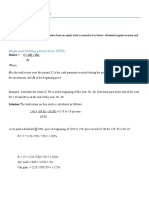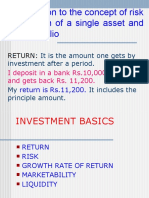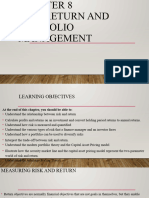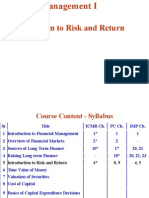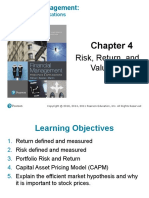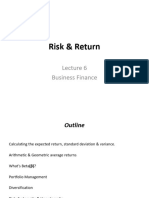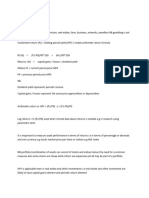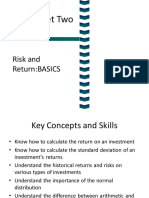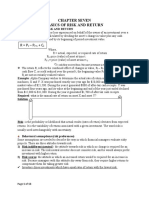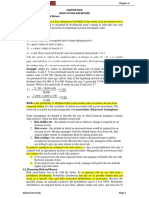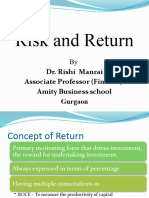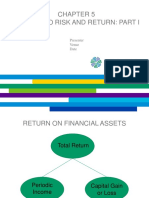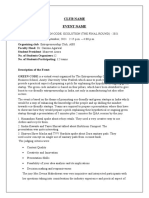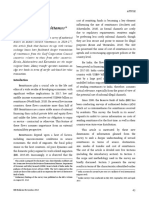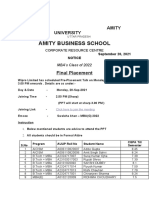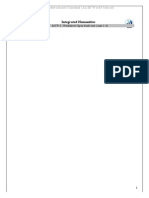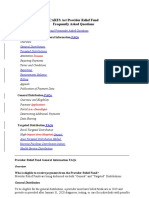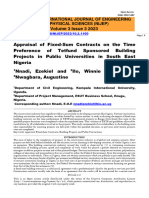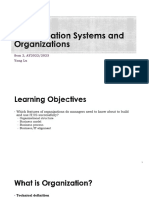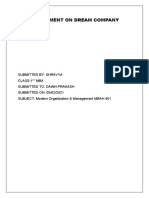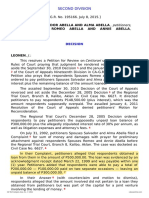0% found this document useful (0 votes)
96 views37 pagesModule 1 Part II
The document discusses financial concepts related to risk and return, including calculating historical return, multi-period return using arithmetic and geometric means, variance and standard deviation as measures of risk, expected return and risk of single assets and portfolios. Formulas are provided for determining expected return, variance, and standard deviation of single assets and portfolios consisting of multiple assets.
Uploaded by
aditi anandCopyright
© © All Rights Reserved
We take content rights seriously. If you suspect this is your content, claim it here.
Available Formats
Download as PDF, TXT or read online on Scribd
0% found this document useful (0 votes)
96 views37 pagesModule 1 Part II
The document discusses financial concepts related to risk and return, including calculating historical return, multi-period return using arithmetic and geometric means, variance and standard deviation as measures of risk, expected return and risk of single assets and portfolios. Formulas are provided for determining expected return, variance, and standard deviation of single assets and portfolios consisting of multiple assets.
Uploaded by
aditi anandCopyright
© © All Rights Reserved
We take content rights seriously. If you suspect this is your content, claim it here.
Available Formats
Download as PDF, TXT or read online on Scribd
/ 37





